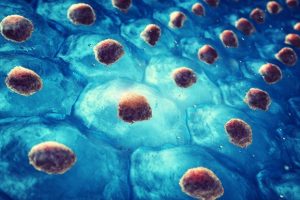First induced bat iPSCs offer insights into the close relationship between bats and SARS-CoV-2 viruses

Researchers from the Icahn School of Medicine at Mount Sinai have generated the first induced pluripotent stem cells (iPSCs) from bats, gaining valuable insights into the close relationship between bats and viruses. This research opens the door to studying how viruses like SARS-CoV-2, which causes COVID-19, survive, spread, and evade the immune system through molecular adaptations to new hosts.
The team's findings, published February 21 in Cell, may also shed light on the unique properties of bats that underlie their remarkable defenses against aging and cancer.
Our study suggests that bats have evolved mechanisms to tolerate a large load of viral sequences, and they may have a more entwined relationship with viruses than previously thought. This takes on new relevance given the fact that many species of bats have been shown to tolerate and survive viruses that have high mortality rates in humans, including SARS-CoV, SARS-CoV-2, MERS-CoV, and Marburg. The reason could be a modulation of bats' innate immune response, which renders them asymptomatic and tolerant virus hosts."
Thomas Zwaka, MD, PhD, Senior Author, Professor of Cell, Developmental and Regenerative Biology at Icahn Mount Sinai
Induced pluripotent stem cells are created by genetically and chemically reprogramming skin or blood cells into newborn stem cells, which have the potential to become any cell in the body.
Until now, no reliable cellular models existed for studying bat biology or their responses to viral infections, thus hindering a deeper understanding of their genomic adaptations. The Mount Sinai team is helping to fill that void by creating induced pluripotent stem cells from the wild greater horseshoe bat (Rhinolophus ferrumequinum), which is the most common asymptomatic carrier of coronaviruses, including viruses closely related to SARS-CoV-2.
"Comparing bat iPSCs to other mammals enabled us to uncover a unique stem cell biology never observed before," notes co-author Adolfo García-Sastre, PhD, Irene and Dr. Arthur M. Fishberg Professor of Medicine and Director of the Global Health and Emerging Pathogens Institute at Icahn Mount Sinai. "The most extraordinary finding was the presence of large virus-filled vesicles in bat stem cells representing major viral families, including coronaviruses, without compromising the cells' ability to proliferate and grow. This could suggest a new paradigm for virus tolerance as well as a symbiotic relationship between bats and viruses."
Immunology eBook

Researchers believe the bat stem cell model they created will provide an exceptional tool for the scientific community. The first author of the study, Marion Dejosez, PhD, Associate Professor of Cell, Developmental and Regenerative Biology at Icahn Mount Sinai, points out that "pluripotent stem cells have the unique ability to divide indefinitely in culture and turn into immune cells and tissues (like lung or gut epithelium), making them amenable to gene editing and molecular studies."
This research, in turn, could help answer such important questions as how bats tolerate viral infections and whether they genetically simulate tactics employed by viruses to evade the immune system, thus promoting fertile ground for virus production. An additional question the study helps to answer is whether viruses serve as fully competent agents and editors of host biology in a way that makes them rich sources of evolutionary instructions.
"Future research on bat stem cells will directly impact every aspect of our understanding of bat biology, including bats' amazing adaptations of flight and ability to locate distant or invisible objects through echolocation, the location of objects reflected by sound, as well as their extreme longevity and unusual immunity," explains Dr. Zwaka, whose lab at Mount Sinai focuses on fundamental questions around stem cell biology.
The greatest scientific gains, however, are expected to be in the bat virosphere. "Our study establishes a platform to further understand the unique role bats play among mammals as virus reservoirs," says Dr. García-Sastre. "And that knowledge could provide the field with broad new insights into disease and therapeutics while preparing us for future pandemics."
This study was funded by the National Institutes of Health, the National Institute of General Medical Sciences, the Eunice Kennedy Shriver National Institute of Child Health and Human Development, and the Huffington Foundation,
Mount Sinai Health System
Posted in: Cell Biology | Genomics
Tags: Aging, Blood, Cancer, Cardiology, Cell, Cell Biology, Child Health, covid-19, Ear, Education, Eye, Gene, Genomic, Genomics, Geriatrics, Global Health, Health Care, Health Systems, Hospital, Immune Response, Immune System, immunity, Induced Pluripotent Stem Cells, Liver, Medicine, MERS-CoV, Mortality, Neuroscience, Newborn, Research, SARS, SARS-CoV-2, Skin, Stem Cells, students, Technology, Therapeutics, Virology, Virus
Source: Read Full Article




